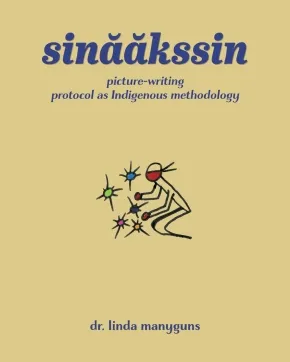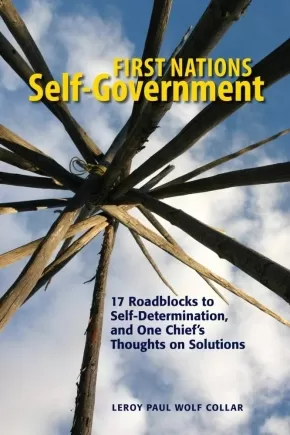Siksika (Blackfoot)
Synopsis:
sinăăkssin is grounded in cultural practice and insists on writing about research from an Indigenous perspective, focusing on the theme of Indigenous communication methods and emphasizing that culture is alive and capable of influencing research in a good way.
active applications are guided by traditional protocol and informed by symbolic methodologies from the old ways, animating and disrupting the research process to open a respectful bridge that enables the Okaki otapi'ksi to modify the housing crisis depicted in storied form. the symbolic/storied housing replication challenges the tenets of research by creating unique, culturally informed housing models designed to promote building strong families.
critical to the application of Indigenous research methodologies process, Indigenous communications methods are a significant, forgotten part of Indigenous knowledge that has not been explored as an Indigenous research method. Using Indigenous symbols as communication tools for research and applying Indigenous protocols bring people respectfully together. that respect enables the contribution of ancient knowledges to correct the current misalignment in society with Indigenous ways of living.
sinăăkssin is a purposive application of humility and humbleness. written in lowercase, it resists conforming to colonial forms of writing and helps distinguish authentic Indigenous knowledge. this book's perspective is relevant to each Indigenous studies courses or teachings about Indigenous cultures, demonstrating the marvelous opportunities we can develop by using some of the oldest communication tools to juxtaposition Indigenous and non-indigenous interfaces.
Additional Information
Paperback
Synopsis:
Indigenous Peoples in Canada are continuing to assert their right to self-determination in this era of reconciliation. While dozens of Indigenous communities have signed varying forms of self-government agreements with the federal government, Indigenous Nations still face many obstacles along the path to true self-determination.
As a former Chief of Siksika Nation in southern Alberta, Leroy Wolf Collar dealt with many of the same problems other Indigenous Nations face across the country. From serious housing shortages to the lack of opportunities for youth, Chief Wolf Collar experienced the challenges and frustrations that come from operating in a colonial system still constrained by the Indian Act.
How do Indigenous Peoples move on from this defective system? Chief Wolf Collar identifies 17 issues that currently hinder Indigenous Nations—including broken treaty promises, problems with common forms of band administration, and the intrusion of provincial governments—along with potential solutions to overcome them.
This guide is for current and aspiring Indigenous leaders who want to increase their understanding of good governance, management, and leadership, as well as those who want to explore issues around Indigenous self-determination in Canada.
Educator Information
Recommended in the Canadian Indigenous Books for Schools 2020/2021 resource list for grades 11 and 12 for use in these areas: Law, English Language Arts, and Social Studies.
Additional Information
128 pages | 6.00" x 9.00"








